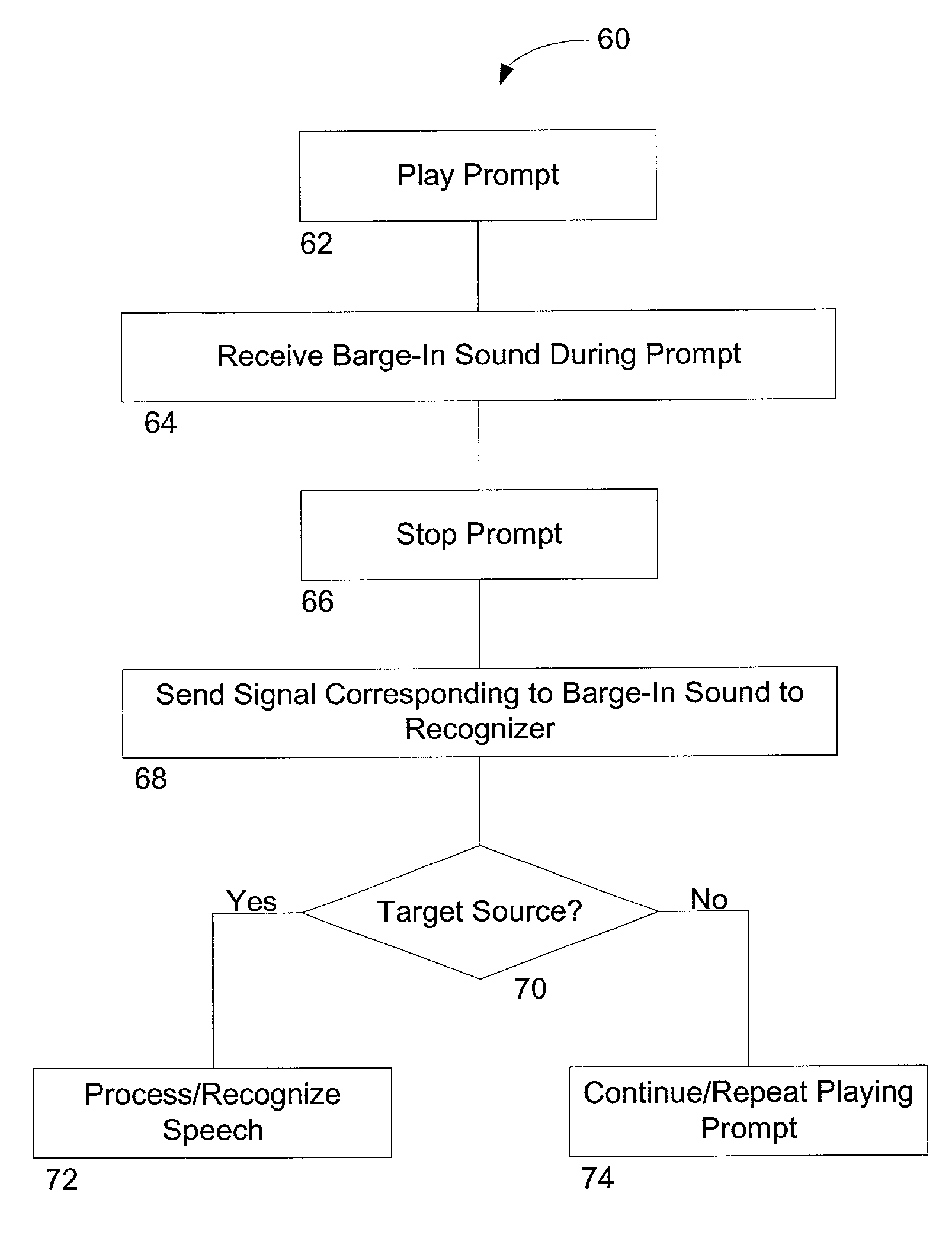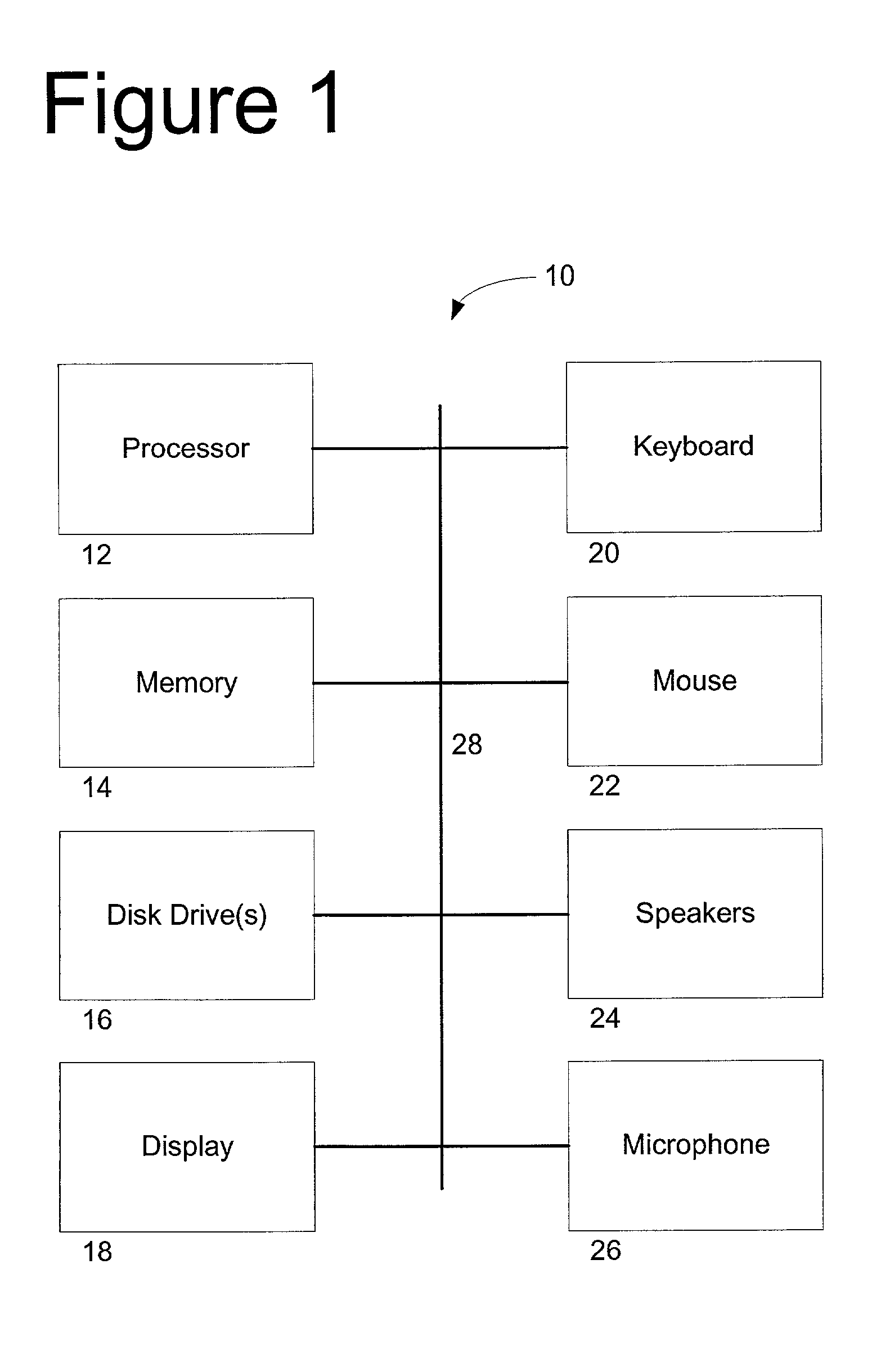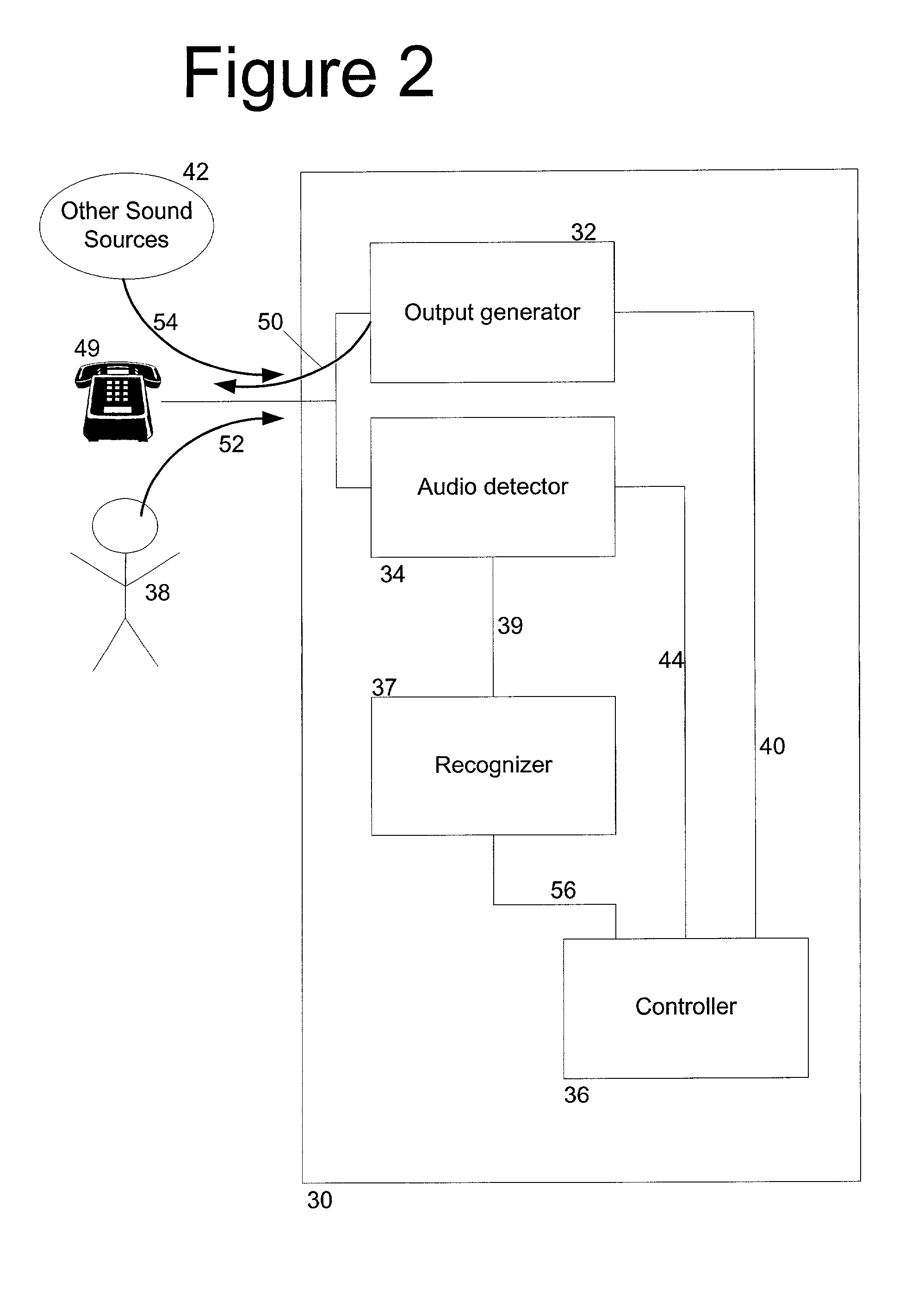Non-target barge-in detection
a detection method and non-target technology, applied in the field of speech recognition, can solve problems such as inhibiting the effectiveness of the ivr system
- Summary
- Abstract
- Description
- Claims
- Application Information
AI Technical Summary
Problems solved by technology
Method used
Image
Examples
Embodiment Construction
[0013]As shown in FIG. 1, a computer system 10 according to a preferred embodiment includes a processor 12, memory 14, one or more disk drives 16, a display 18, a keyboard 20, a mouse 22, speakers 24, and a microphone 26. The processor 12 can be a personal computer central processing unit (CPU), using, for example, a Pentium III or Pentium 4 processor made by Intel Corporation. Memory 14 preferably includes random access memory (RAM) and read-only memory (ROM). The disk drives 16 can include, for example, floppy-disk drives, a hard-disk drive, a CD-ROM drive, and a Zip or other drive with removable disks (and which may or may not be rewritable). The display 18 may be a cathode-ray tube (CRT) or other form of display, such as a liquid-crystal display (LCD). The keyboard 20 and mouse 22 provide data input mechanisms for a user (not shown). The speakers 24 can produce audio output for the user and the microphone can receive sounds, e.g., speech from the user. The components of the comp...
PUM
 Login to View More
Login to View More Abstract
Description
Claims
Application Information
 Login to View More
Login to View More - R&D
- Intellectual Property
- Life Sciences
- Materials
- Tech Scout
- Unparalleled Data Quality
- Higher Quality Content
- 60% Fewer Hallucinations
Browse by: Latest US Patents, China's latest patents, Technical Efficacy Thesaurus, Application Domain, Technology Topic, Popular Technical Reports.
© 2025 PatSnap. All rights reserved.Legal|Privacy policy|Modern Slavery Act Transparency Statement|Sitemap|About US| Contact US: help@patsnap.com



